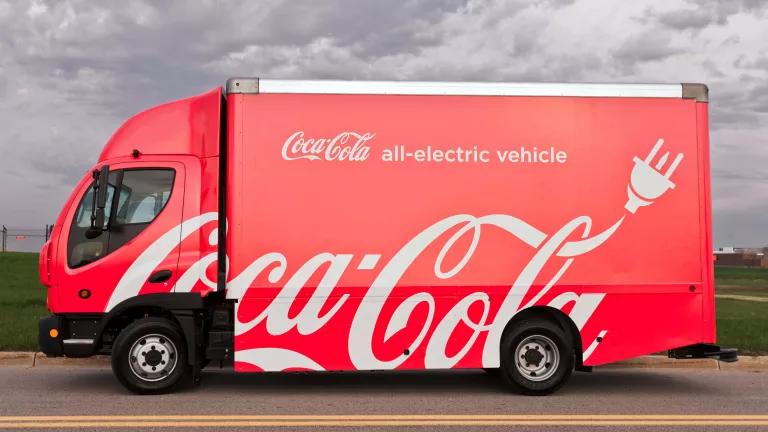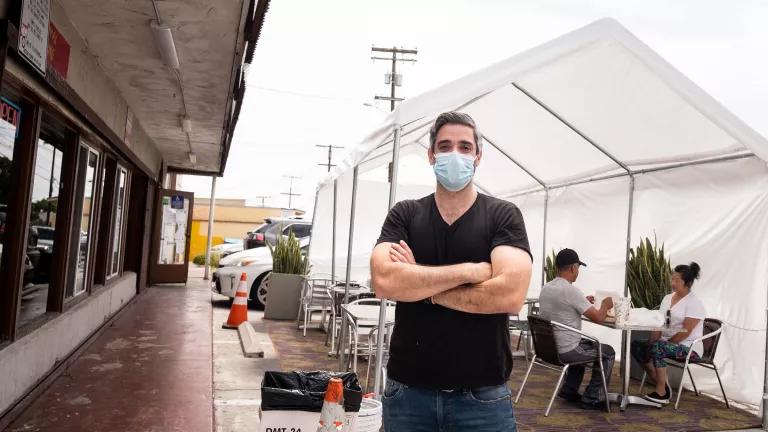Efficient Road User Charge Law Codified
California law adopted to test a Road User Charge adjusted for efficiency.

States have been experimenting with a “Road User Charge” (RUC) for decades as a potential alternative to the gas tax, but those pilot programs have generally only tested flat per-mile fees that do not account for vehicle pollution, weight, size, or other factors the gas tax takes into account inherently because it takes more energy to move heavier, bigger, more polluting vehicles. Now California will show there’s better way forward.
Thanks to Senator Wiener’s Senate Bill (SB) 339, the state’s transportation commission will be piloting, not just another flat RUC, but also one that accounts for vehicle efficiency so as to better align with climate, air quality, and equity goals. Senator Wiener amended his bill to incorporate vehicle efficiency in response to feedback from the following groups:
- NRDC
- Coalition for Clean Air
- Communities for a Better Environment
- Union of Concerned Scientists
- Environment California
- Environmental Defense Fund
- Sierra Club
- California Bicycle Coalition
Many assume taxing vehicle-miles-travelled (VMT) is the only solution to stabilize transportation funding revenue. However, a VMT tax (a RUC by another name) is just as susceptible to revenue erosion as existing motor fuel taxes that are not indexed to both inflation and total fuel consumption. Regardless of whether a state is relying upon fuel taxes or a VMT tax to collect transportation revenue, it must index to both inflation and either total fuel consumption or total VMT to break the conflict between reducing fuel consumption/reducing VMT and collecting revenue needed to maintain the transportation system.
Nearly 40 years ago, we started to break the same type of conflict in the power sector by indexing utility rates to total fuel consumption via “revenue decoupling,” which adjusts utility rates up or down automatically to ensure utilities collect no more or no less than their authorized revenue requirements. In the 33 states where that solution is in place, it has forever removed the conflict between collecting necessary revenue and pursuing energy efficiency that cuts pollution and lowers customer bills. There is no reason the same type of accounting mechanism could not work in the transportation sector.
A flat RUC that is not indexed also fails to reflect the “polluter pays” principle and removes the incentive for people to buy more efficient vehicles and to drive them more efficiently. It is estimated that replacing the federal gas tax with a flat RUC would result in the consumption of 5 billion additional gallons of petroleum per year, costing consumers approximately $12.5 billion and resulting in 45 million tons more of carbon pollution annually.
A flat RUC that assesses the same cent-per-mile fee on all vehicles also ignores the fact bigger, heavier, less efficient vehicles take up more space on the roads and are disproportionately responsible for damage to the roads. A fuel-based tax (like the gas tax) or a RUC that is adjusted for vehicle efficiency better reflects the “user pays” principle because it takes more energy to move bigger, heavier vehicles.
Oregon has been piloting a RUC for nearly a decade. The state’s effort has provided important lessons and insights. However, with 1,300 volunteer vehicles, the program only generated $842.77 in net-revenue because it wrote checks to drivers of vehicles that get less than 20 MPG to refund them for money they spent on gas taxes in excess of what the VMT fee collects. Per the program’s final evaluation report:
The only reason the program has a positive balance is because there are slightly more vehicles in the program that get more than 20 MPG, than there are vehicles that get less than 20 MPG.
In other words, the Oregon pilot’s negligible net-revenue was entirely reliant on volunteers with cleaner, more efficient vehicles enrolling into a pilot against their own economic self-interest.
If drivers of Rolls Royces, Hummers, Ferraris or other gas guzzlers had been allowed to continue to opt-in, the program would have lost money. And the amount of the refund checks increases with the amount of association pollution. If the program were to replace the state’s gas tax, it would no longer be writing physical checks that correspond to pollution, but the effect would be the same. This is the inherent deficiency in any flat RUC.
Thankfully, California will avoid the pitfalls made plain by the Oregon experience and not simply pilot another flat RUC, but test how a RUC could be adjusted to account for individual vehicle efficiency, based on mile-per-gallon (MPG) or, in the case of zero-emission vehicles, mile-per-gallon-equivalent (MPGe) ratings published by the U.S. EPA.
Aligning the collection of transportation revenue with efforts to improve energy efficiency, accelerate the adoption of zero-emission vehicles, and reduce VMT helps all consumers save money, and helps low- and moderate-income households the most. Analysis of 34 years of consumer spending found improving vehicle efficiency benefits everyone, and that low- and middle-income households save a greater share of household income relative to higher-income households. Improving vehicle efficiency provided middle-income families as much as $17,000 over the study period, despite the fact that households paid slightly more for new and used cars equipped with fuel-saving technology.
A RUC adjusted for vehicle efficiency could also prove a more sustainable and equitable alternative to flat and regressive electric vehicle (EV) fees. Unlike typical vehicle registration fees, annual EV registration fees do not decline to account for vehicle depreciation, but remain in full force for the duration of the vehicle’s life, hurting low and moderate-income consumers who buy used vehicles and who most need the operating cost savings EVs can provide.
We thank Senator Wiener for amending SB 339 to test this simple adjustment, allowing California to demonstrate how a RUC could be better aligned with climate, air quality, and equity goals.



